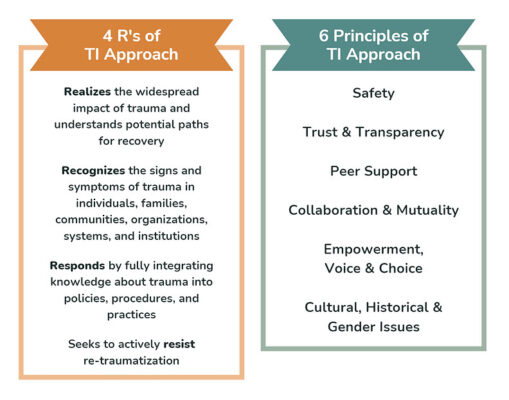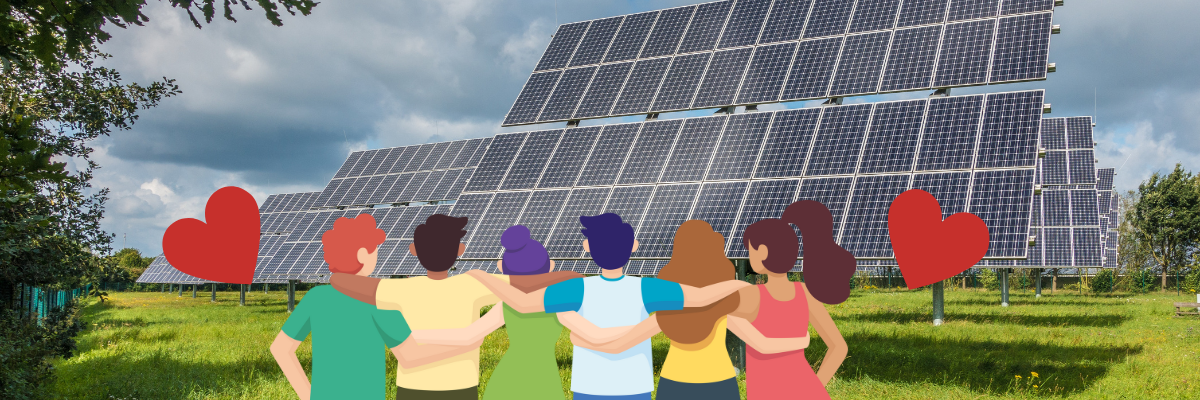by Sam Randall
While attending this year’s National Home Performance Conference (NHPC ’24), I was fortunate to have the opportunity to attend a fascinating breakout session that focused on a topic near and dear to me – trauma informed practices.
Facilitated by Habitat for Humanity staff, “Person-Centered, Trauma Informed Home Repair Programming and Approaches” was a highlight of my NPHC ’24 experience.
Because my professional and educational background was in Gender Violence Prevention before my current role in clean energy policy, I studied and trained others on PCTI care and practices so the content of this session brought together many of my interests.
Inspired by this conference session and my background, I decided to examine the intersection of PCTI application to my current policy work. I sought to explore practices and compare themes about how PCTI might be applied in clean energy policy work overall such as policies related to the built environment.
What does it mean to be PCTI?
Before looking deeper into how to apply PCTI in energy policy, I want to explain what is meant by “Person-Centered, Trauma Informed” practices and approaches.
While much of the available research and most common applications of PCTI focus on healthcare settings, a growing movement is bringing PCTI themes into other realms. Viewing different workplaces and public policy efforts through a trauma-informed lens is increasingly important and relevant considering statistics such as how 70% of adults globally have experienced at least one traumatic event in their lives (source: NIH.gov).
At its core, the PCTI approach recognizes the importance of understanding a person or community’s unique experiences, and designing programs and services to function in a way that is conscious of how having experienced trauma may affect the person or community.
According to the Substance Abuse and Mental Health Services Administration in the U.S. Department of Health and Human Services (SAMHSA), “trauma results from an event, series of events, or set of circumstances that is experienced by an individual as physically or emotionally harmful or life threatening and that has lasting adverse effects on the individual’s functioning and mental, physical, social, emotional, or spiritual well-being.”
The PCTI approach acknowledges that past traumas can significantly impact an individual’s present behavior, health outcomes, and overall well-being. It emphasizes safety, trustworthiness, choice, collaboration, and empowerment to ensure that individuals feel respected and heard throughout their interaction.
Applying the PCTI approach more broadly, SAMHSA outlines the following principles to explain how to be PCTI:

source: https://www.ctipp.org/post/2023-state-federal-trauma-informed-policy-review
How does the PCTI approach relate to energy and climate policies?Public policy using a PCTI approach ensures that policies and services are designed with a deeper understanding of the people they impact. PCTI as a policy framework values and respects individual experiences with the goal of fostering environments where everyone can thrive.
Abundant research focuses on direct correlations between human health and energy, so here I work from the understanding that it is necessary to transition to clean energy for the sake of health and safety. This is one of the main ways that PCTI fits into energy policy: energy policies and initiatives have profound implications for individuals’ well-being, particularly those who are vulnerable or marginalized.
Consider, for instance, communities living near coal-fired power plants or industrial facilities emitting pollutants into the air and water. These communities often bear the brunt of environmental harms, experiencing higher rates of respiratory illnesses, cardiovascular diseases, and other health problems due to exposure to harmful pollutants. The same communities are frequently low-income and/or communities of color and facing systemic inequalities that exacerbate their vulnerability.
In this context, advocating for energy efficiency/clean energy policies isn’t only about reducing carbon emissions or transitioning to renewable energy sources. It’s also about prioritizing the health and well-being of individuals and communities affected by environmental injustice. It’s about recognizing the trauma inflicted by years of living in polluted environments and offering solutions that not only mitigate environmental harm but also help to address the underlying social and economic disparities.
The PCTI approach offers a valuable framework for reimagining our approach to public policy goals that advance clean energy and support the integration of energy efficiency. By centering the well-being and agency of individuals and communities, we can create energy systems that prioritize both human dignity and planetary health.
In Conclusion
Fortunately, my research for this blog leads me to believe that bringing PCTI approaches to energy policy should be a natural transition. Progress toward energy justice and initiatives focused on energy democracy are gaining traction in many places around the U.S.
The themes of the PCTI approach and energy democracy go hand in hand. Energy democracy “seeks to address the energy system’s legacy of structural inequities through greater public accountability and distributive infrastructure investments” (source: Energy Democracy Project Congressional Briefing 2021*). Organizations like those that collaborated to create the Energy Democracy Project are working to advance the emerging energy democracy movement. I find that to be an exciting sign that people are ready to “welcome in” PCTI practices!
Ultimately, I see the PCTI approach to energy efficiency and clean energy policy work as a necessity. By focusing on the holistic well-being of individuals and communities, we can create a more equitable, resilient, and sustainable future. As the world continues to transition to clean energy, ensuring that this transition benefits everyone will be key to its success. Embracing the PCTI practices and the human element can pave the way for a cleaner and more just world for all.
*Sources/Recommended for Further Reading
- Energy Democracy:
- Trauma-Informed Social Policy: A Conceptual Framework for Policy Analysis and Advocacy by Elizabeth A. Bowen and Nadine Shaanta Murshid
- A Trauma Informed Program Approach to Workforce by Vickie Choitz and Stacey Wagner
- Energy Efficiency as Energy Justice: Addressing Racial Inequities through Investments in People and Places by Jamal Lewis and Diana Hernández
- Practical Guide for Implementing a Trauma-Informed Approach (SAMHSA)
- Public Policy Considerations for Building an Equitable Clean Energy Workforce by Reine Lauren Rambert
- Campaign for Trauma-Informed Policy and Practice
–Sam Randall is a Policy Fellow at E4TheFuture
